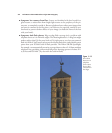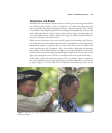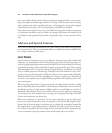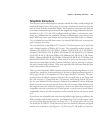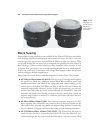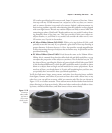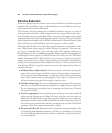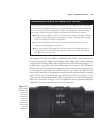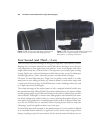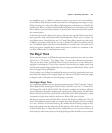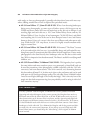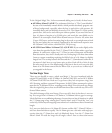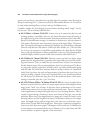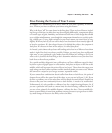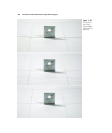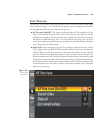
Your Second (and Third…) Lens
There are really only two advantages to using just a single lens. One of them is creative.
Keeping one set of optics mounted on your D7000 all the time forces you to be espe-
cially imaginative in your approach to your subjects. I once visited Europe with only a
single camera body and a 35mm f/2 lens. The experience was actually quite exciting,
because I had to use a variety of techniques to allow that one lens to serve for landscapes,
available light photos, action, close-ups, portraits, and other kinds of images.
Of course, it’s more likely that your “single” lens is actually a zoom, which is, in truth,
many lenses in one, taking you from, say, 16mm to 85mm (or some other range) with
a rapid twist of the zoom ring. You’ll still find some creative challenges when you stick
to a single zoom lens’s focal lengths.
The second advantage of the unilens camera is only a marginal technical benefit since
the introduction of the Nikon D7000. If you don’t exchange lenses, the chances of dust
and dirt getting inside your D7000 and settling on the sensor is reduced (but not elim-
inated entirely). Although I’ve known some photographers who minimized the num-
ber of lens changes they made for this very reason, reducing the number of lenses you
work with is not a productive or rewarding approach for most of us. Recent Nikon cam-
eras, like the D7000, have an automatic sensor cleaning feature that has made this
“advantage” much less significant than it was in the past.
It’s more likely that you’ll succumb to the malady known as Lens Lust, which is defined
as an incurable disease marked by a significant yen for newer, better, longer, faster,
sharper, anything-er optics for your camera. (And, it must be noted, this disease can cost
David Busch’s Nikon D7000 Guide to Digital SLR Photography380
Figure 11.18 The lens also includes an autofocus lock
button that can be activated while holding the lens.
Figure 11.19 The rotating collar allows mounting the
lens/camera to a tripod in vertical or horizontal
orientations—or anything in-between.



